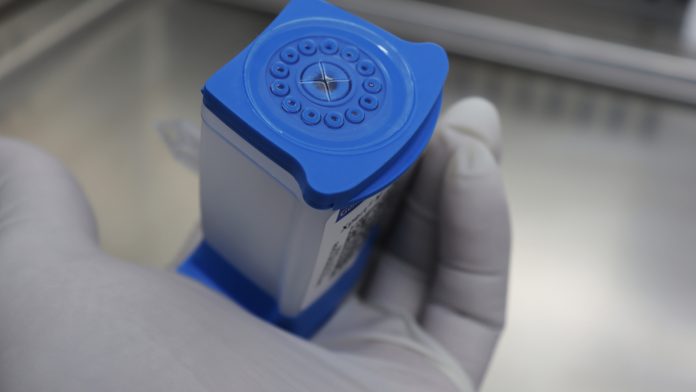
Dr Beryl Oppenheim, Senior Director, Medical Affairs at Cepheid, an industry-leading company in molecular diagnostics, provides insights into how their cutting-edge technology can alleviate the threat of antimicrobial resistance (AMR).
The devastation imposed by the COVID-19 pandemic serves as a stark reminder of how rapidly infection can disseminate around the world without the implementation of robust, fast testing, appropriate control measures, and effective treatments. Unfortunately, similar catastrophic effects are already being demonstrated globally due to antimicrobial resistance, with recent reports signifying the magnitude of this growing problem. Estimates suggest that 1.27 million deaths were caused by AMR in 2019 and played a role in a further 4.95 million deaths, making it a leading cause of mortality worldwide(1). Without innovations in testing and diagnostics that empower clinicians to make accurate and rapid decisions regarding instituting infection prevention measures and optimal use of antimicrobials, this substantial health threat will continue to be exacerbated.
Dr Beryl Oppenheim is a medically qualified microbiologist who has worked in the National Health Service in England for many years, heading up laboratories and leading infection control teams. She has published widely with more than 100 peer-reviewed publications, and her main research interests include healthcare-associated infections (HAIs), antimicrobial resistance, and infections in the critically ill and immunocompromised host. She is currently Senior Director, Medical Affairs at Cepheid. In this report, Health Europa spoke to Dr Oppenheim to discuss the landscape of AMR and how Cepheid’s automated technology can support efforts to mitigate this global health crisis.
The GRAM Report (Global Research on Antimicrobial Resistance) data for 2019 revealed some concerning trends. Estimated deaths increased to 1.27 million, and deaths, where AMR played a role, were a staggering 4.95 million. How urgent do you feel is action to combat this problem, and do you think there is sufficient concern and co-operation at the government level?
Antimicrobial resistance is one of the biggest threats to global human health and needs urgent attention from global policymakers. AMR is already growing rapidly, with drug-resistant bacteria threatening health professionals’ ability to treat common infectious diseases and practice modern medicine such as performing complex surgery, providing cancer chemotherapy, or performing stem cell and solid organ transplants.
In order to stop the spread of resistant bacteria in patients, a fast and accurate diagnosis must become a standard of care across the world to allow clinicians and infection prevention professionals to quickly identify, isolate, and appropriately treat patients colonised or infected with drug-resistant bacteria(2).
Governments’ plans for post-COVID-19 recovery, specifically plans to reduce disease transmission and control outbreaks must consider positioning fast molecular testing at the heart of health systems. In many countries in Europe, access to fast, automated diagnostics is still fragmented, and many patients need to wait days or even weeks for their results before being prescribed appropriate treatment.
Have you identified the bacteria that are becoming most resistant, and what conditions are they related to?
The emergence and global spread of carbapenemase-producing organisms (CPO) is of great concern to health services worldwide. CPO refers to bacteria such as Klebsiella, Escherichia coli (E. coli), Acinetobacter, and Pseudomonas, that are found in normal human intestines. Sometimes these bacteria can spread outside the gut and cause serious infections, such as urinary tract infections, bloodstream infections, wound infections, and pneumonia. When these bacteria spread outside the gut, they can be very difficult to treat.
These bacteria are often resistant to all beta-lactam antibiotics and frequently co-resistant to most other antibiotics, leaving very few treatment options. The most common bacteria associated with resistance can quickly result in difficult-to-manage outbreaks and can be harmful to patient outcomes, disruptive, and costly to clinical service delivery.
In hospital settings, Clostridioides difficile is a leading cause of antibiotic-associated diarrhoea(3), and methicillin-resistant Staphylococcus aureus(MRSA) could be a prominent cause of hospital-acquired infections(4). Healthcare facilities need the ability to test high-risk patients and get an accurate result quickly during or prior to the admission process for better patient and bed management.
Is the problem restricted to hospital settings?
Antibiotic-resistant infections are equally a major threat in community settings. Sexually transmitted infections are becoming increasingly difficult to treat, with multi-drug resistant gonorrhoea on the rise worldwide(5) and the emergence of multi-drug resistance in Mycoplasma genitalium(6), raising further concerns. Drug resistance in tuberculosis is also now widespread,(7) posing a major public health threat to the management of this important infection. Many TB patients wait for their lab results for a few weeks, and instead of isolation and appropriate treatment, they go back and transmit the disease in the community.
In gynaecology and maternity units, patients can be detected with infection by Group B streptococcal (GBS), a human commensal of the gastrointestinal tract that can be passed from the mother to the baby during childbirth, causing life-threatening infections in newborns (e.g. neonatal sepsis). Proactive screening for GBS at the time of delivery (intrapartum) allows prescribing antibiotics to women only once and only if needed.
What different forms of defence do we need to deploy to reduce levels of AMR?
Proactive, fast, and early molecular testing for antimicrobial resistance has a key role to play in reducing the development and spread of infections and resistance.
In-vitro technologies are a much-needed tool for fast and accurate detection of patients colonised or infected with multidrug-resistant organisms to help prevent widespread outbreaks and determine the best infection prevention pathways.
Point-of-Care Testing has a major role to play. Would you agree that it is probably the most immediate tool we can deploy to both control antibiotic use and get an accurate picture of the infections we are dealing with?
Point-of-care (POC) testing brings significant value and efficiency in all health care settings. We have all experienced the great benefit of testing in decentralised and community settings during the COVID-19 pandemic. Now, we need to develop improved antibiotic control frameworks across healthcare systems to include these antimicrobial resistance testing strategies.
Considering the European Union’s focus on AMR in 2022, what strategies can it recommend to Member States to implement existing and planned policies to tackle AMR?
A clear, focused strategy to leverage fast and accurate molecular diagnostics together with guidance on targeted infection control and antibiotic stewardship measures, and ongoing surveillance, would allow Member States to develop and implement measures most appropriate to their individual requirements.
What has Cepheid developed that may be employed immediately, and in what settings?
At Cepheid, we already have a wide portfolio of diagnostic tests that can be leveraged in the fight against AMR in both hospital and community settings and are expanding this portfolio with a number of innovative products.
In the hospital setting, Cepheid tests can identify the most common resistance genes that code for carbapenemase production in a time frame that allows targeted and effective infection control measures(8). MRSA carriage can be detected in about one hour, again allowing quick decision-making regarding isolation measures and initiation of suitable treatment.
Outside of hospitals, detection of specific sexually transmitted infections enables focussed treatment regimens, while the ability to identify Flu A or B and RSV as well as Strep A sore throats to prevent unnecessary antibiotic treatment can significantly benefit stewardship measures in primary care.
About Cepheid
Cepheid is a molecular diagnostics company dedicated to improving healthcare by developing, manufacturing and marketing accurate yet easy-to-use molecular systems and tests. By automating highly complex and time-consuming manual procedures, the company’s solutions deliver a better way for institutions of any size to perform sophisticated molecular testing for infectious diseases. Through its strong molecular biology capabilities, the company is focusing on applications where accurate, fast and actionable PCR test results are needed most, such as COVID-19, healthcare-associated infections, sexual health, critical infectious disease, virology, and oncology.
The company primarily offers a multi-use diagnostic GeneXpert® system that works across 30 IVD tests and fully integrates and automates sample extraction, amplification, and detection — all in one cartridge. The system is suitable for use in multiple clinical settings such as hospitals, labs and point of care primary care.
Bibliography
- Antimicrobial Resistance Collaborators. Global burden of bacterial antimicrobial resistance in 2019: a systematic analysis. Lancet. 2022 Feb 12;399(10325):629–55.
- Corless C, et al. Impact of different carbapenemase-producing Enterobacterales screening strategies in a hospital setting. IPIP. 2020 May;2(3):100011
- Guery B, et al. Clostridioides difficile: diagnosis and treatments. BMJ. 2019 Aug;366:4609.
- Czepiel J, Dróżdż M, Pituch H, Kuijper EJ, Perucki W, Mielimonka A, et al. Clostridium difficile infection: review. Eur J Clin Microbiol Infect Dis. 2019 Jul;38(7):1211–21.
- Klausner JD, Bristow CC, Soge OO, Shahkolahi A, Waymer T, Bolan RK, et al. Resistance-Guided Treatment of Gonorrhea: A Prospective Clinical Study. Clin Infect Dis. 2021 Jul 15;73(2):298–303.
- Tabrizi SN, Su J, Bradshaw CS, Fairley CK, Walker S, Tan LY, et al. Prospective Evaluation of ResistancePlus MG, a New Multiplex Quantitative PCR Assay for Detection of Mycoplasma genitalium and Macrolide Resistance. J Clin Microbiol. 2017 Apr 5;55(6):1915–9.
- Cao Y, Parmar H, Gaur RL, Lieu D, Raghunath S, Via N, et al. Xpert MTB/XDR: a 10-Color Reflex Assay Suitable for Point-of-Care Settings To Detect Isoniazid, Fluoroquinolone, and Second-Line-Injectable-Drug Resistance Directly from Mycobacterium tuberculosis -Positive Sputum. J Clin Microbiol. 2021 Feb 18;59(3).
- Corless CE, Howard AM, Neal TJ. Impact of different carbapenemase-producing Enterobacterales screening strategies in a hospital setting. Infection Prevention in Practice. 2020 Sep;2(3):100011.









